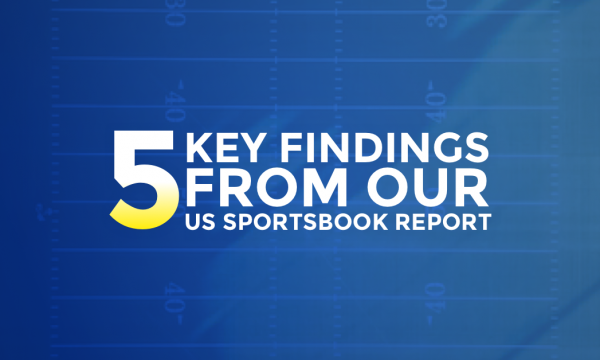Google is often a key early touchpoint in the customer journey for automotive brands, and is increasingly where consumers are turning to before they set foot into the sometimes unforgiving environment of the dealership showroom.
With such a wealth of content now being produced within this sector, with news and reviews of new models, paid search is an important channel for generating leads and nurturing consumers through what may often be a prolonged customer journey that relies on many touchpoints.
So how are those brands utilising the channel? To answer that question, we reviewed the activity of 27 car manufacturer brands and compared their respective approaches over a seven day period.
Using our proprietary Market Defender tool, we were to look beyond Auction Insights and really understand the strategies brands are adopting, including the copy of their ads and landing pages that they are using to capture and convert that all important traffic.
Brands neglecting to bid on brand
Initially we wanted to see if there are any trends on brands who do no bid across paid search. We found that Aston Martin, BMW, Chrysler, Fiat and Honda weren’t bidding on their brand terms and, in the case of Aston Martin, weren’t bidding on ‘brand + model’ keyword terms either.
This presents great opportunity not just for competitor brands but re-sellers of new and used vehicles to drive low cost traffic on these terms. For example, the brokerage site CarWow is bidding on terms such as ‘Honda’, and this term is likely to be delivering low cost, high volume traffic. Carwow was also the most aggressive brad across the branded terms we reviewed.
Slow take-up of expanded ad format
The industry seems to have been slower to adopt the expanded ad format than we would have perhaps expected. We found that 26% of ads were still using standard ad copy, and it seems to have been the more premium brands that have been slower to change.
It is possible that some of these brands have trialled ETAs outside of our trial period and found them to be less effective, but there are undoubtedly opportunities provided by expanded text ads that should be exploited.
In particular, we would recommend looking to the more advanced features such as ad customisers to improve ad performance by device.
Our search across the core keywords showed no one was utilising any Google Betas. However, it may be that restrictions on the impressions available for Betas means we have not seen them. There are number of Beta ad extensions we are running that we would recommend for the automotive industry.
A strong focus on trust, but not on price
The messaging and language of ads and landing pages is obviously a key element of a paid search campaign, and it is interesting that language that establishes trust and authority is the core focus of many automotive ad campaigns, with the terms “official”, “site” and “UK” the most commonly found in ad headlines.

It isn’t particularly surprising that these terms were the most prevalent, and it perhaps demonstrates the level of recognition that the brands have for the level of competition in the marketplace. With the customer journey involving a series of different digital touchpoints, including manufacturers, dealerships, brokers, lease hire companies, finance brands and review websites, it is important for the manufacturers to establish themselves as the key authority in this sector.
However, for the 74% of the ads that made use of the second headline, we found no real pattern or consistency in approach. Some brands tended to push their ‘range’ of cars, whilst others were trying to generate action such as ‘explore’ or ‘discover’. Only one headline across the board pushed a price point, that being an ad from Hyundai.
Whilst headlines were very much focused on trust and authority, we found that descriptions were much more emotive, personal and action driven.

The description copy was much more personal with ‘you’ and ‘your’ messaging. As well as intent focussed ‘test’, ‘today, ‘find’. However, car brands must remember to check their spelling – can you spot the typo in Audi’s ad?

Only a small percentage of brands pushed a price point or promotion. These included Mitsubishi (“3 years 0% APR & £0 deposit”), SEAT (“£500 off”), Nissan and Hyundai (both with the message “from only £7,995”).
This likely shows that on core brand terms, which are most likely used in the earlier stages of the customer journey, price points and promotions are not as effective. Instead test drives appeared to be a more commonly used call to action, appearing 43% of the ads we monitored.
We also found that customisation was also a key selling point, with brands such as Land Rover, Volkswagen and Mini preferring terms such as ‘build’ and ‘customise’ to test drive related terms.
Brokers and dealers exploiting the gaps
There are undoubtedly gaps being left by car manufacturers in their paid search strategy, particularly relating to brand, and these are being exploited by competing websites including brands such as CarWow, dealerships, leasing providers and used car websites (the latter being particularly prevalent on localised search).
The review of copy above really sets the tone for what is likely to work. Firstly, we would recommend that brands make the switch to expanded text ads sooner. ETAs will eventually be forced onto advertisers so it is important that if there are impacts on click-through rates, that brands capture insights now, before standard ads are officially removed from accounts.
It’s also important to ensure that landing pages are tailored to the search query, and that it is focused on facilitating the action that the ad encouraged. If the aim is to book a test drive, make sure this is the most prominent focus of the landing page.
There are some gaps against best practice across the industry, however each of these gaps are unique to each brand. Given the investment in this sector, efficiencies can be made. We have developed our own approach to this using years of expertise and testing.


